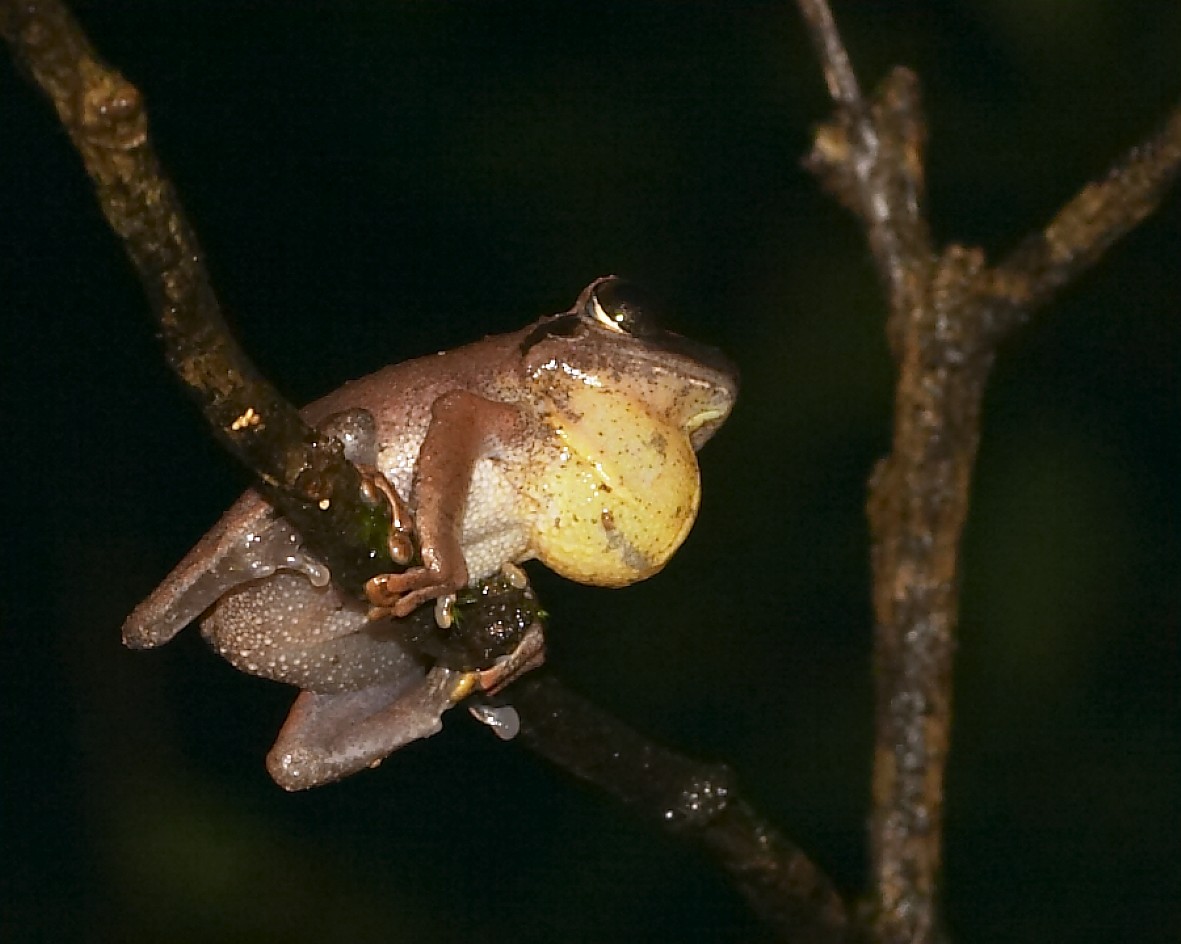To locate a frog that is calling out is always a challenge, more so if it is an arboreal frog. I have on a few occasions been lucky to spot a few terrestrial frogs calling out to their potential mates but never had an opportunity to witness a tree frog do so. This opportunity came about during a trip into the wilderness.
Couple of years ago, during the rainy months, a few friends and I visited a forested area in Maharashtra. It rained incessantly all afternoon. Luckily the rain subsided towards the evening. Armed with rainwear and torches, we walked into the forest. Before we could realise, the din created by the mating calls of the frogs surrounded us. Calling frogs seemed to be all around us, but we could not spot a single one!
After a good period of searching, one of us chanced upon a tree frog sitting on a slender branch, more than an arms length above us. All of us were very excited about this find! We had a good look at the frog and those of us with a camera managed to get a few pictures. The frog did not mind the attention it was getting and it continued to call.

The calls of amphibians (frogs and toads) are best appreciated during the breeding season. With the onset of rains, frogs and toads come out of their hiding. This is when we hear a variety of calls. The males of the species generally produce these calls. They find suitable spots often near water bodies and start calling. Females usually are quiet, but very sensitive to the calls of the males of their own species.
The calls of frogs and toads are very varied. Each species has a unique call.The sounds vary from croaks, grunts, bleats to the chirping of birds! This ensures that only the male and female of a given species meet to reproduce and thus also survival of the species.